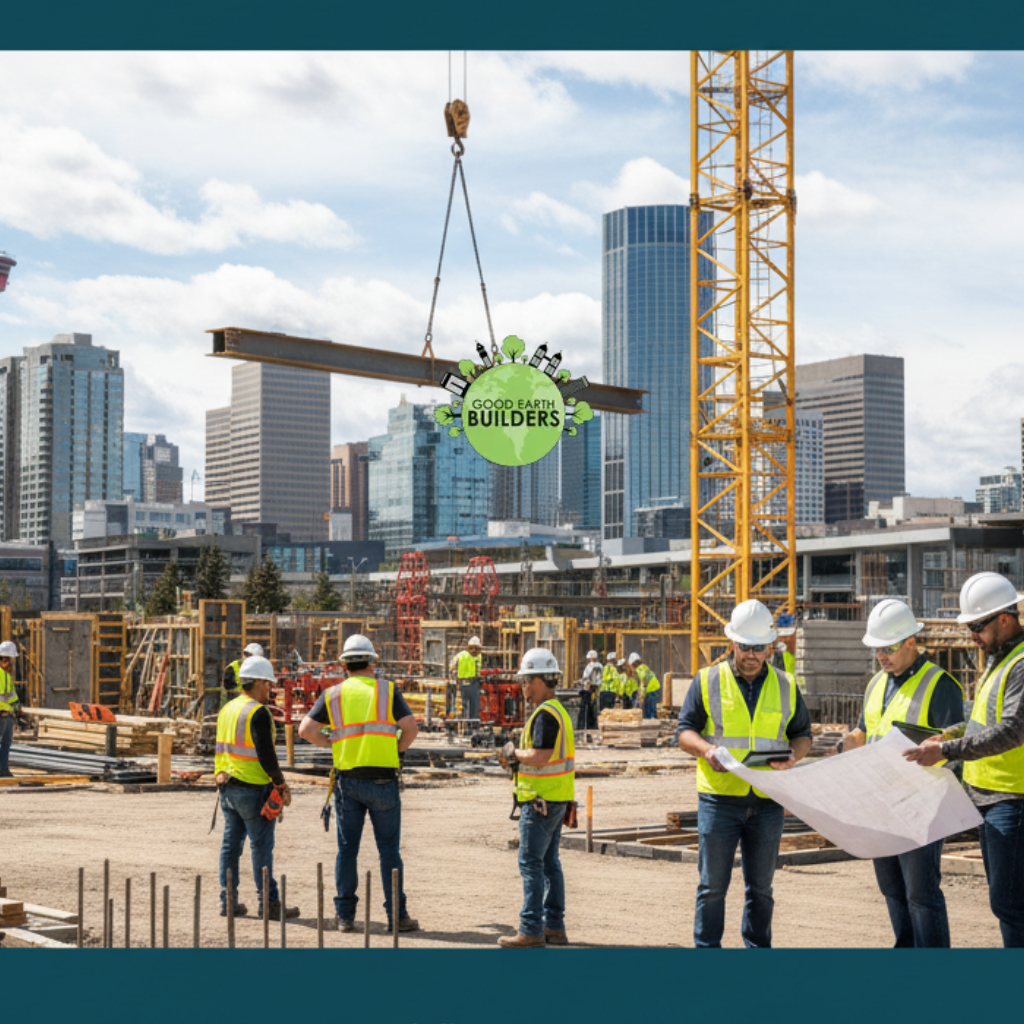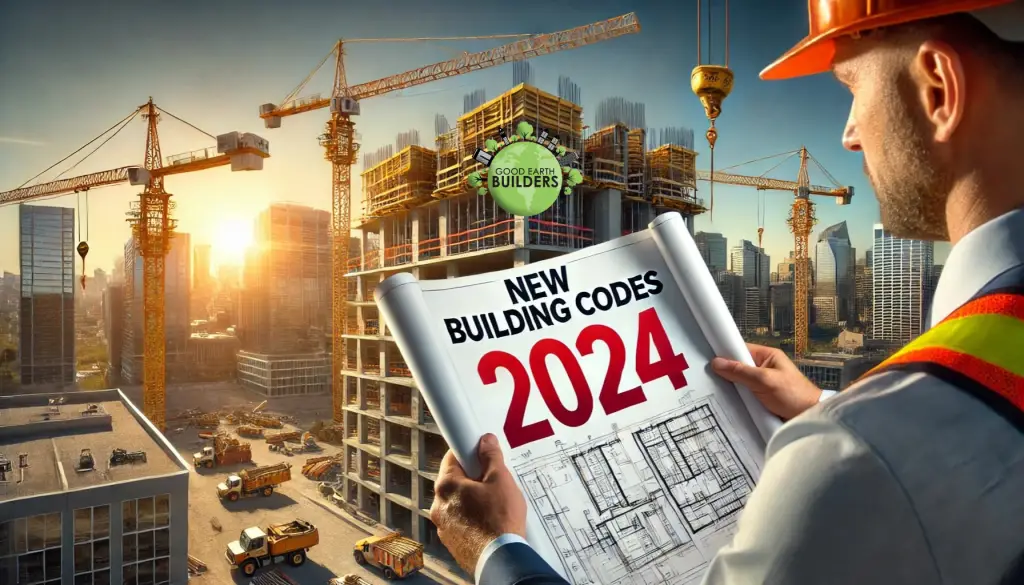Friday, October 24, 2025
Introduction: The Hidden Cost of Inefficiency and the Value of Time
In the dynamic world of commercial construction, success is measured not just by the quality of the final structure, but by the predictability and efficiency of the journey. Commercial projects—ranging from high-rise offices and medical facilities to sprawling retail centers—operate under immense pressure. They involve highly complex logistics, intricate sequencing of specialized trades, and massive capital outlay. For a General Contractor (GC) and the client, efficiency is the single greatest determinant of profit, schedule adherence, and ultimately, project success.
A study by McKinsey & Company highlighted that the construction industry has historically lagged in productivity growth compared to other sectors. This gap is not a matter of hard work; it is a matter of smarter work. Every wasted hour, every instance of rework, and every misplaced piece of equipment accumulates into significant financial leakage. This detailed guide is engineered to provide a robust, actionable framework for maximizing job site efficiency, transforming operational bottlenecks into streamlined processes, and ensuring projects are completed safely, on time, and on budget. We will explore the four critical pillars: Planning, Logistics, Technology, and People.
I. The Foundation: Planning and Pre-Construction—Earning Efficiency
Efficiency is not a lucky accident that happens in the field; it is a meticulous outcome engineered during the pre-construction phase. A rushed start guarantees an inefficient project. Up to 80% of project productivity is determined by the quality of initial planning.
A. Master Scheduling: Beyond the Temporal
The standard Critical Path Method (CPM) using a simple Gantt chart often falls short on large commercial projects. While it dictates when a task must finish, it fails to account for where the work happens, leading to congestion and conflict.
1. Implementing Location-Based Scheduling (LBS)
LBS is a powerful evolution of scheduling. It breaks the project down into manageable work zones (e.g., Floor 4 Core, East Wing Exterior, Zone C) and sequences trades by location rather than just by time. The key output is a consistent, productive flow for each crew. By ensuring Trade A leaves a zone exactly when Trade B is ready to enter, LBS eliminates trade stacking—where multiple crews vie for the same limited space—and drastically reduces idle time. This process is essential for high-velocity projects like multi-story construction.
2. Utilizing 4D and 5D Planning
Advanced builders leverage Building Information Modeling (BIM) to create a 4D model (3D Model + Time). This allows the entire team to literally watch a time-lapse video of the construction sequence virtually. This visualization instantly flags logistical problems: Where will the crane sit during this month? Will the delivery truck block the fire lane during the steel erection phase? Extending this to 5D Planning adds the cost element, linking every activity to its budget, providing real-time financial transparency against the schedule.
B. The Lean Construction Mindset: Value Over Waste
The philosophy of Lean Construction, adapted from the Toyota Production System, centers on maximizing value for the client while eliminating all forms of waste (non-value-adding activities).
1. Applying the “Last Planner System” (LPS)
LPS is a planning and control system designed to improve workflow reliability. It involves a collaborative, tiered planning process:
- Phase Planning: High-level milestones.
- Look-Ahead Planning: Identifying future constraints (design issues, material deliveries) 3-6 weeks out so they can be removed.
- Weekly Work Planning: Created by the Last Planners (foremen/superintendents). By having the individuals who execute the work commit to the plan, commitment reliability soars. The weekly process involves measuring Percent Plan Complete (PPC) to foster continuous improvement.
2. Identifying and Reducing the “Seven Wastes”
Lean practices categorize inefficiency into seven common forms of waste (known by the acronym TIM WOOD):
- Transportation: Moving materials unnecessarily (solved by optimized site layout).
- Inventory: Excess materials cluttering the site (solved by Just-in-Time delivery).
- Motion: Unnecessary walking or reaching by workers (solved by tool organization).
- Waiting: Idle time for labor, equipment, or materials (the target of LBS).
- Over-Processing: Doing more work than the specifications require.
- Over-Production: Producing or starting work too early.
- Defects: Rework due to errors or poor quality (the most costly waste).
C. Proactive Risk Mitigation: Anticipating the Snags
Effective planning must include mechanisms to manage two primary schedule killers: the supply chain and design changes.
- Anticipating Supply Chain Kinks and Material Shortages: The procurement phase must be initiated immediately upon design freezing. Long-lead items (custom windows, specialized HVAC units, structural steel) need signed purchase orders and tracked manufacturing timelines months in advance. Developing contingency plans with vetted backup suppliers prevents a single vendor’s issue from stalling the entire project.
- Strategies for Managing Change Orders (COs): While inevitable, COs must be processed rapidly. An efficient project establishes a clear, immediate communication protocol: Field to PM to Client Approval in less than 48 hours. Digital project management systems are crucial here for real-time cost and schedule impact analysis, preventing COs from becoming project-paralyzing bottlenecks.
II. On-Site Optimization: Logistics, Flow, and Asset Management
Once construction is underway, the focus shifts to creating a highly organized, safe, and logical physical environment where work can proceed without friction.
A. Efficient Site Layout and Material Management
A disorganized site is a productivity vacuum. Time spent looking for tools, moving obstacles, or cleaning up messes is non-value-added time.
1. Designing the Optimal Laydown Area
The laydown area is the operational heart of the site. It must be carefully planned to allow for clear paths for cranes and forklifts. The Just-in-Time (JIT) delivery philosophy is key: materials are delivered as close as possible to the point of installation, in the sequence they are needed. This minimizes the double-handling of materials, a massive source of wasted labor hours.
2. The Power of “Tool Libraries” and Mobile Storage
Tools and small equipment should be stored in standardized, organized, and easily accessible mobile containers (like gang boxes) or dedicated staging rooms, with a strict check-in/check-out system. Workers should spend zero minutes hunting for a piece of equipment. Using RFID tags on expensive tools ensures they are located quickly and securely.
3. Standardized Waste Management
A proactive approach to housekeeping is a direct indicator of efficiency. Clearly labeled bins for recycling, debris, and hazardous waste prevent safety hazards and simplify site cleanup. Daily ‘Tidy Time’ or a specific crew dedicated to housekeeping ensures the workspace is always clean for the next trade.
B. Equipment and Fleet Administration
Construction equipment is the engine of the project. Ensuring its constant operation is paramount to efficiency.
1. Data-Driven Preventative Maintenance
Moving beyond simple calendar scheduling, modern construction utilizes telematics—devices installed on equipment that track usage hours, idle time, and diagnostic trouble codes in real time. This allows the maintenance team to schedule proactive maintenance based on actual usage, minimizing the risk of catastrophic, unexpected failure. The motto is simple: Maintenance is an investment; reactive repair is a loss.
2. Tracking and Allocating Assets with GPS/RFID
For large commercial sites, finding a specific piece of equipment (a scissor lift, a portable generator) can waste valuable time. GPS and Radio-Frequency Identification (RFID) tracking systems provide real-time visibility into the location and utilization rate of every major asset, ensuring the right tool is always where it needs to be. This also aids in preventing theft and improving security.
III. The Tech Advantage: The Digital Central Nervous System
Technology is the differentiator for high-efficiency builders. It provides the single source of truth and the connectivity required to manage the complexity of modern commercial construction.
A. Project Communication and Collaboration Tools
Digital platforms replace messy paper trails, disparate emails, and lost verbal instructions with a transparent, searchable, and immediate system.
1. Implementing Mobile Field Management Software
Cloud-based platforms (Procore, Autodesk Construction Cloud, etc.) allow project managers, superintendents, and foremen to access and update all project information on a mobile device in the field. Key benefits include:
- Digital Daily Reports: Instantaneous capture of labor hours, site conditions, and progress photos.
- Real-Time RFI Management: Superintendents can submit an RFI from the point of installation with a photo, and the design team can respond instantly, shrinking resolution time from days to hours.
- Digital Punch Lists: Punch lists are generated and tracked in the field with photos and assigned accountability, drastically accelerating closeout.
2. Centralized Document Control
This is the single most effective way to eliminate costly rework. A cloud system ensures that only the latest, approved set of drawings is visible and accessible to everyone on site. If a new drawing is issued, the old one is digitally watermarked as “Superseded,” preventing crews from building to outdated plans.
B. Advanced Technologies Driving Productivity
Efficiency is further amplified by adopting technologies that fundamentally change how and where work is performed.
1. The Impact of Modular and Prefabrication
By manufacturing complex components (e.g., HVAC ductwork runs, plumbing manifolds, entire bathroom pods) off-site in a climate-controlled factory, GCs achieve three massive efficiency gains:
- Schedule Compression: On-site crews perform less complex assembly instead of fabrication.
- Quality Control: Factory conditions allow for higher precision and reduced defects.
- Labor Shift: The work is moved from the unpredictable job site to the controlled, highly efficient manufacturing environment. This dramatically reduces on-site labor hours and speeds up the construction process.
2. Drone Mapping and Digital Twins
Drones perform rapid, high-accuracy surveys and progress tracking. They can quickly generate orthomosaic maps (highly accurate, georeferenced aerial photos) and 3D models of the site. This data is used to compare actual progress against the BIM model (Digital Twin), instantly highlighting variances and ensuring quality control and adherence to the plan.
IV. People and Culture: The Ultimate Efficiency Driver
The greatest asset on any commercial job site is the workforce. Even with the best technology, an unmotivated, untrained, or disorganized team will fail.
A. Training, Skill, and Workforce Flow
Maximizing labor efficiency means maximizing the competence and safety of every person on site.
1. Continuous, Targeted Training
Efficiency is improved when workers are confident in their tasks. Beyond basic safety certifications, training must be continuous and targeted—e.g., training in the proper use of new digital tools, specific installation methods for new materials, and cross-training to allow for flexible deployment. This investment signals that the company values its people, which in turn boosts morale and productivity.
2. Prioritizing Safety to Eliminate the Costliest Delays
Safety is not a counterpoint to efficiency; it is a prerequisite. Every safety incident—from a minor trip-and-fall to a major injury—halts production, triggers extensive investigations, and raises insurance costs. By enforcing rigorous, clear safety protocols and providing ongoing education (like daily Toolbox Talks), the job site maintains a disciplined, focused, and most importantly, uninterrupted work rhythm.
B. Leadership, Communication, and Accountability
Efficient flow requires effective leadership that removes obstacles and ensures clarity.
1. The Superintendent as a Flow Manager
The Field Superintendent is the efficiency gatekeeper. Their primary role is not to simply supervise, but to eliminate roadblocks for the trade partners. This includes ensuring power is run, material is staged, and the preceding trade’s work is 100% complete and approved before the next trade arrives. They are the daily executors of the Lean principles.
2. Establishing a Culture of “No Fear” Communication
The best ideas and the earliest warnings often come from the trade workers in the field. A successful GC cultivates a culture where workers are encouraged to report potential issues or schedule conflicts immediately, without fear of blame. This frontline feedback is invaluable for preventing small problems from snowballing into massive delays.
3. Accountability and Performance Metrics
Teams must be held accountable to the plan. Utilizing metrics like Percent Plan Complete (PPC) provides a transparent, measurable way to track reliability. Performance should be regularly reviewed, and recognition should be given to teams that consistently deliver high quality on schedule.
V. The Full Circle: Efficiency as a Commitment to Excellence
Maximizing job site efficiency in commercial construction is a complex yet solvable puzzle. It requires a holistic, integrated strategy that sees the project as a total system—from the digital BIM model and the logistical plan to the training of the workforce. By committing to Lean principles, aggressive technology adoption, and people-centric management, commercial builders can shift their performance profile from unpredictable to reliably excellent. This commitment not only secures profit but builds an indispensable reputation in the market.
⭐ Partner with a Builder Driven by Efficiency: Good Earth Builders
At this point, you may be wondering: Which General Contractor is truly putting this all into practice, delivering a seamless, high-efficiency build experience?
For over 30 years, Good Earth Builders has cemented its reputation not just on building structures, but on building smarter, faster, and with predictable outcomes for our clients. We believe the future of commercial construction is defined by efficiency, and we have invested heavily to make it our greatest strength.
Our approach is built on the integrated pillars discussed in this guide:
- Lean-First Project Delivery: We are rigorously trained and certified in the Last Planner System (LPS), ensuring our weekly work plans and field teams manage workflow reliability down to the hour. We don’t tolerate unnecessary waiting; we execute.
- VDC and 5D Integration: Our dedicated Virtual Design & Construction (VDC) team utilizes 5D BIM modeling to link the model, the Location-Based Schedule, and the budget. This intensive pre-construction process resolves upwards of 95% of major system conflicts before mobilization, saving our clients time and eliminating millions in potential on-site rework.
- Technology in the Field: Every superintendent and foreman operates on a fully integrated mobile platform, providing them with real-time access to the latest plans, allowing them to submit and resolve RFIs instantaneously, and track assets with precision. Our digital ecosystem guarantees that the field is never disconnected from the office.
- Commitment to People: We invest heavily in continuous skill development and our Safety First, Efficiency Always program, fostering a disciplined, high-morale work environment that directly translates to uninterrupted progress and superior quality.
If your next commercial construction project demands a partner whose process is built on predictability, speed, and uncompromising efficiency, you need a builder who is ready to deliver the future of construction today.
Ready to partner with a contractor whose efficiency is guaranteed?
📞Contact Good Earth Builders today for a consultation and see how our efficient approach can transform your next project’s timeline and budget.




